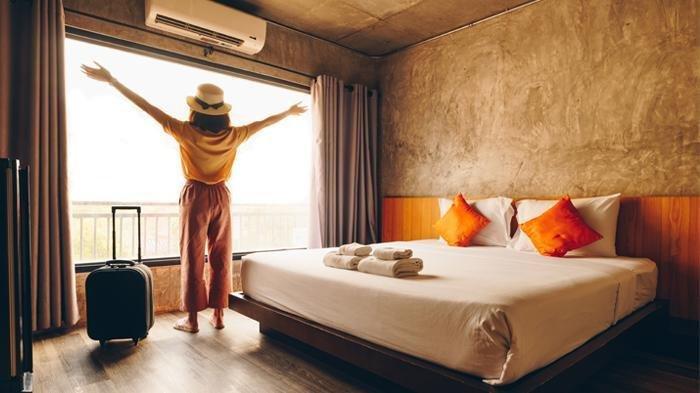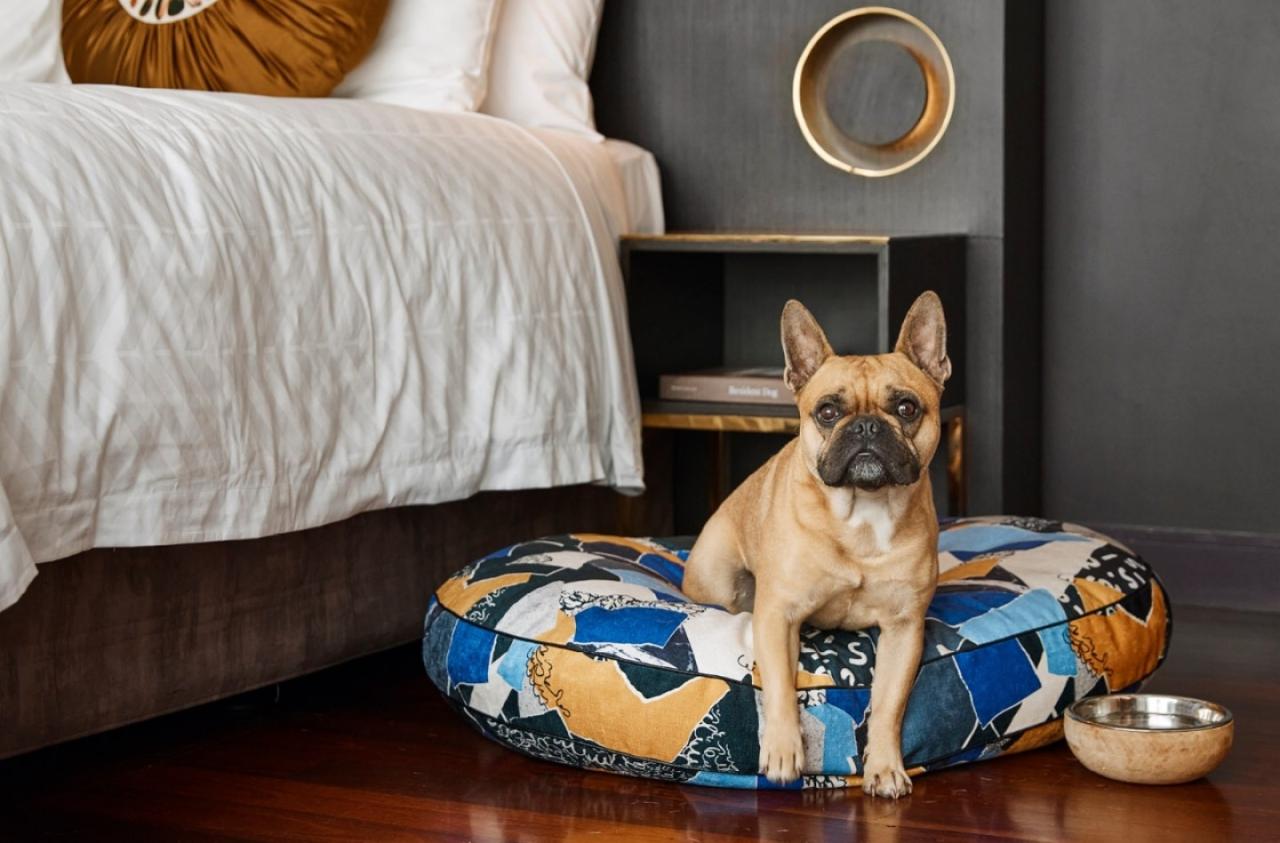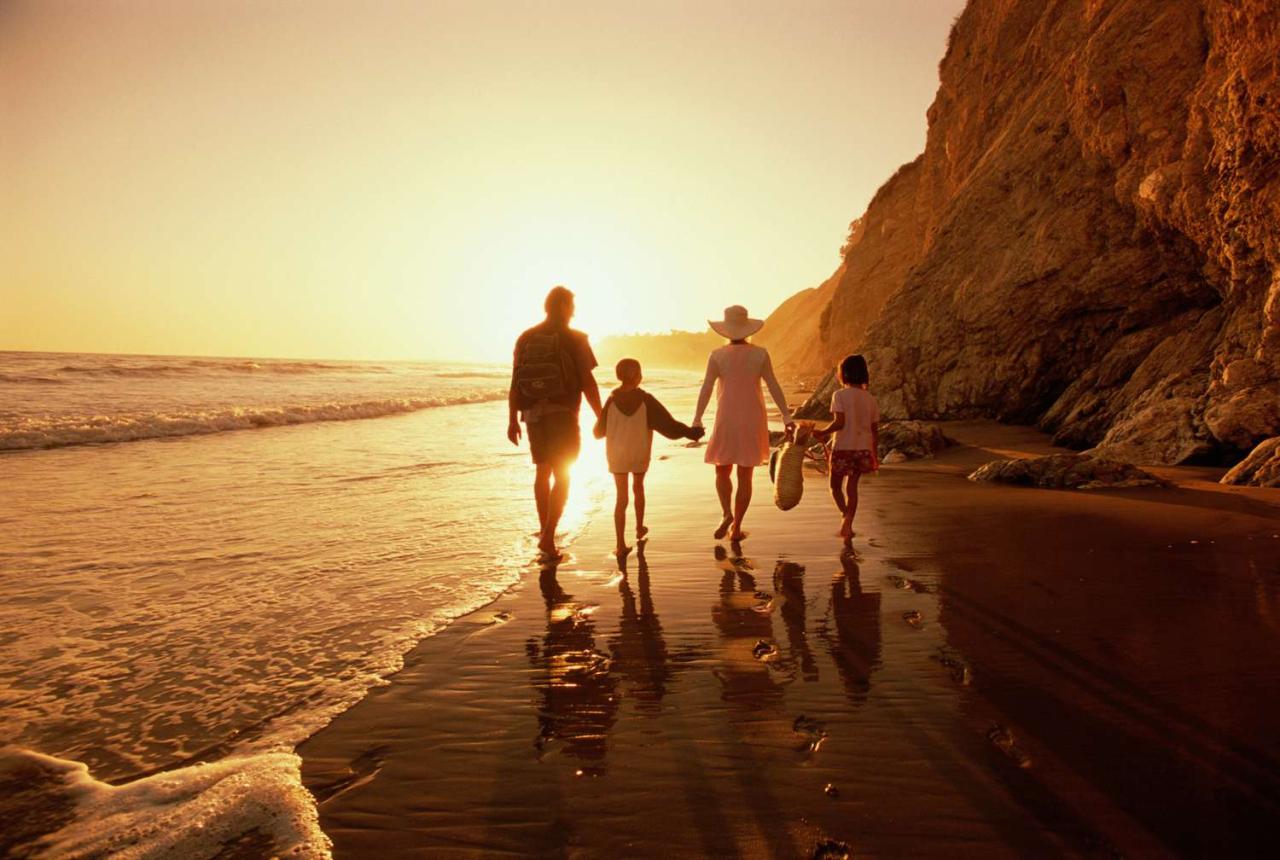Our Companions, Our Travelers
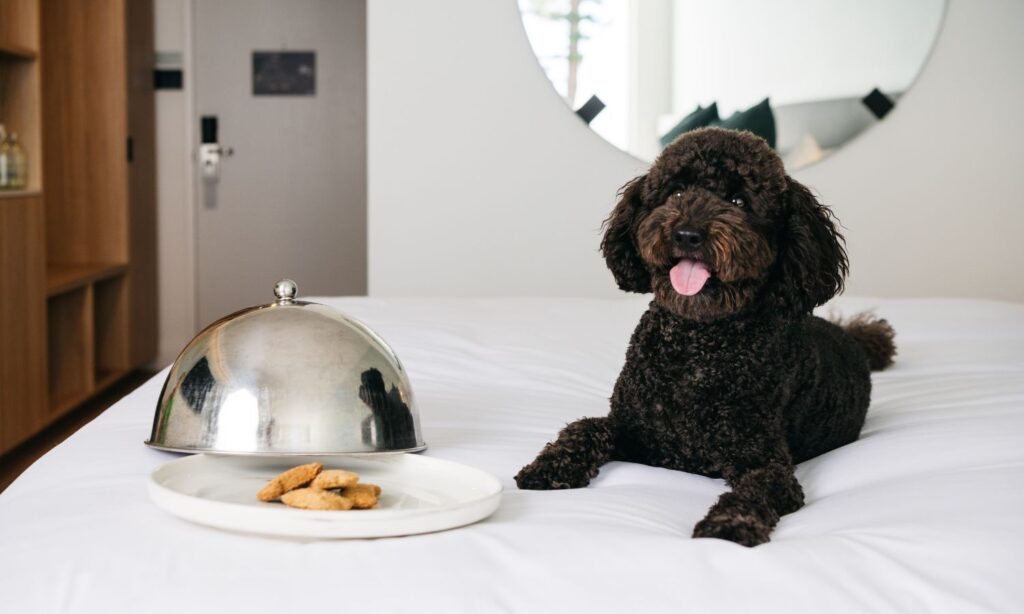
Pets are no longer just animals; they are integral members of the family. This deeply rooted emotional connection means that for many, travel isn’t truly complete without their beloved companion by their side. The “pet paradox” highlights this shift: while traditional travel infrastructure often presented barriers, the modern pet owner is determined to overcome them, demanding accommodations that understand and embrace this bond.
At its core, a truly pet-friendly lodging offers more than just permission; it provides a genuinely welcoming environment, often encompassing:
A. Clear and Welcoming Pet Policies: Transparent rules regarding pet size, breed (if any restrictions), number of pets allowed, and any associated fees. A truly friendly policy focuses on welcome, not just restrictions.
B. Comfortable Pet Amenities: Providing essentials such as food and water bowls, pet beds or blankets, complimentary treats, and sometimes even toys upon arrival, making pets feel immediately at home.
C. Designated Pet-Friendly Areas: Clearly marked pet relief areas with waste disposal stations, and sometimes designated zones within the property (e.g., specific lobby areas, outdoor patios) where pets are welcome.
D. Access to Green Space: Proximity to parks, walking trails, or dedicated on-site pet play areas, ensuring pets have ample opportunities for exercise and outdoor relief.
E. Soundproofed or Ground-Floor Rooms: Accommodations designed to minimize noise disturbances to other guests and provide easy outdoor access, often found on ground floors or in specific wings.
F. Pet Services and Concierge: Offering or facilitating access to services like pet-sitting, dog walking, grooming, or even veterinary care, catering to the practical needs of pet owners.
Why Pet-Friendly Stays Are Booming
The exponential growth of pet-friendly lodgings is not merely a trend; it’s a profound market response driven by significant societal shifts, economic factors, and evolving travel behaviors.
A. The Human-Animal Bond Strengthening
Pets are increasingly viewed as integral family members, not just animals. This deep emotional connection means that pet owners are unwilling to travel without their companions, prioritizing destinations and accommodations that embrace this bond. For many, a pet is a child, and they are treated as such.
B. Surging Pet Ownership Rates
Global pet ownership has surged, particularly in recent years. This expanding demographic of pet owners represents a massive and lucrative market segment, with significant disposable income often dedicated to their pets’ well-being and inclusion in all aspects of life, including travel.
C. Post-Pandemic Travel Re-evaluation
The global pandemic saw many individuals spending unprecedented time with their pets, strengthening bonds even further. Upon the return to travel, the thought of leaving pets behind became even less appealing, driving demand for pet-inclusive options. Many also acquired new pets during lockdowns, now wanting to travel with them.
D. Increased Disposable Income for Pet-Related Spending
Pet owners, particularly those in higher income brackets, allocate substantial portions of their budget to pet care, food, accessories, and now, travel. They are willing to pay premium fees for accommodations that genuinely welcome and cater to their furry companions, viewing it as an investment in a complete family experience.
E. Rise of Solo Travel with Pets
For solo travelers, pets often provide companionship and a sense of security. As solo travel continues to grow, so does the demand for pet-friendly accommodations that allow these travelers to bring their beloved companions along, reducing loneliness and enhancing their sense of well-being on the road.
Key Features of a Truly Pet-Inclusive Lodging
Beyond simply allowing pets, a truly pet-inclusive lodging goes the extra mile to make both the pet and owner feel genuinely welcome, comfortable, and catered to.
A. Comprehensive and Transparent Pet Policy
A clear, concise, and easily accessible policy that outlines:
- Allowed Pet Types/Sizes: Clearly stating if only dogs/cats are allowed, or if other animals (birds, rabbits) are welcome, along with any weight or breed restrictions.
- Maximum Number of Pets: How many pets are permitted per room.
- Fees: Transparently listing any one-time or per-night pet fees, explaining what they cover.
- Rules of Conduct: Leash requirements, quiet hours, designated areas, and waste disposal responsibilities.The tone should be welcoming, not just restrictive.
B. Thoughtful In-Room Pet Amenities
Upon arrival, the room should be set up to welcome the pet, making them feel comfortable:
- Food and Water Bowls: Clean, sturdy bowls readily available.
- Comfortable Pet Bed/Blanket: A dedicated sleeping space for the pet, not just a bare floor.
- Welcome Treats: A small bag of pet-friendly treats as a welcome gesture.
- Waste Bags: A supply of disposal bags for walks.
- “Pet in Room” Signage: For the door, alerting housekeeping.
C. Accessible and Well-Maintained Pet Relief Areas
Clearly designated and easily accessible outdoor spaces for pets to relieve themselves:
- Green Patches/Turf: Specific areas, ideally fenced, for dogs.
- Waste Disposal Stations: Equipped with complimentary waste bags and disposal bins.
- Regular Cleaning: These areas must be regularly cleaned and maintained to prevent odors and ensure hygiene.
D. Proximity to Pet-Friendly Outdoor Spaces
The lodging’s location should ideally offer easy access to:
- Local Parks and Trails: For dog walking and exercise.
- Pet-Friendly Beaches: If in a coastal area.
- Designated Dog Parks: For off-leash play.Information on these local spots should be readily available to guests.
E. Pet-Friendly Dining Options
Allowing pets to join their owners during meals (where appropriate and permitted by local health regulations):
- Designated Outdoor Patios: Where pets are welcome to sit quietly with their owners.
- Pet-Friendly Room Service Menus: Some luxury properties offer gourmet pet meals or simple pet-friendly snacks through room service.
- Water Bowls for Patios: Offered by staff for pets in dining areas.
F. Specialized Pet Services and Concierge Assistance
Going beyond basic amenities to offer practical support for pet owners:
- Recommended Pet Sitters/Dog Walkers: A list of trusted local services.
- Grooming Referrals: Information on nearby pet groomers.
- Veterinary Contacts: Emergency and non-emergency veterinary clinic information.
- Pet-Friendly Activity Recommendations: Suggestions for nearby attractions, shops, or tours that welcome pets.
G. Staff Training and Pet-Friendly Culture
Crucial for fostering a truly welcoming environment:
- Pet-Comfortable Staff: Employees who are genuinely comfortable around animals and trained in basic pet etiquette.
- Knowledgeable Staff: Able to answer pet-related questions and provide local recommendations.
- Warm Welcome: Staff actively greeting pets and making them feel welcome.
Types of Pet-Friendly Lodgings Flourishing
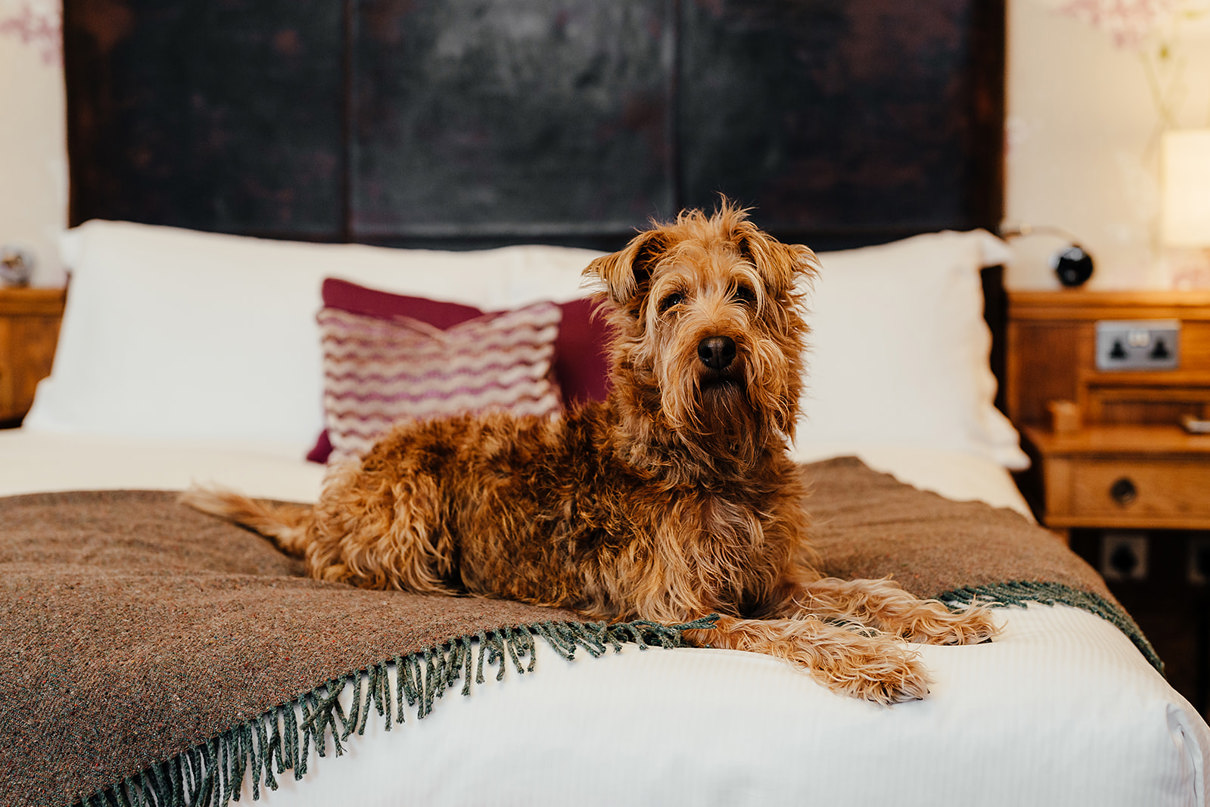
The market for pet-friendly accommodations has diversified significantly, offering a wide array of options to suit various travel styles and budgets.
A. Major Hotel Chains with Dedicated Programs
Many large hotel brands (e.g., Marriott, Hilton, Kimpton) have implemented comprehensive pet programs across their properties. They offer standardized amenities like pet beds and bowls, clear policies, and often charge a pet fee. These provide consistency and reliability for travelers.
B. Boutique and Independent Hotels
Smaller, independent, and luxury boutique hotels often excel at providing highly personalized and unique pet-friendly experiences. They might offer bespoke amenities, pet room service menus, and a more intimate welcome, reflecting their overall focus on curated guest experiences.
C. Short-Term Rentals and Private Villas
Platforms like Airbnb and Vrbo have a vast inventory of pet-friendly homes, apartments, and villas. These offer the ultimate in privacy, space (often with fenced yards), and home-like amenities (full kitchens, laundry), making them ideal for families or longer stays with pets. Hosts can set their own specific pet policies.
D. Glamping Sites and Eco-Resorts
For those seeking outdoor adventures, many glamping sites (luxury tents, yurts, cabins) and eco-resorts are becoming pet-friendly. They combine immersion in nature with comfortable amenities, allowing pets to explore wide-open spaces alongside their owners. These often emphasize responsible pet ownership in natural environments.
E. Extended-Stay Hotels and Serviced Apartments
These accommodations are particularly well-suited for pet owners on longer trips or those relocating. They offer spacious suites with kitchenettes, living areas, and often in-room laundry, providing the comforts of home for both humans and their pets.
The Future of Pet-Friendly Lodgings: A Transformative Vision
The trajectory of pet-friendly lodgings points towards an even more integrated, sophisticated, and technologically advanced future, reflecting the deepening bond between humans and animals.
A. Hyper-Personalization Driven by Pet-Specific AI: AI will leverage data on individual pets (breed, size, dietary needs, known behaviors – with owner consent) to hyper-personalize the stay. This includes automated dispense of favorite treats, customized pet entertainment on in-room screens, or even pre-setting room features for pet comfort (e.g., lower bed for older dogs).
B. Integrated Pet Wellness and Health Monitoring: Smart pet beds and wearable tech (collars) will monitor a pet’s sleep, activity, and vital signs in real-time. This data can be integrated with hotel systems to alert staff to potential issues or offer personalized wellness recommendations (e.g., suggesting a long walk if activity is low, or referring to a vet if vitals are off).
C. On-Demand Pet Services via App: Guests will be able to seamlessly order a range of pet services through a dedicated hotel app: on-demand dog walking, in-room grooming, pet-friendly transportation, or even virtual vet consultations. Robots may assist with basic pet-sitting or play.
D. Dedicated “Pet Zones” and Interactive Play Areas: Future lodgings will feature more elaborate, technologically advanced pet zones. This includes indoor/outdoor interactive play areas with agility courses, splash pads, or even automated treat dispensers. Some may incorporate “pet lounges” where owners and their pets can socialize.
E. Sustainable and Eco-Friendly Pet Amenities: The focus on sustainability will extend to pets. Eco-friendly pet beds made from recycled materials, organic and sustainably sourced pet food, biodegradable waste bags, and water-efficient pet washing stations will become standard.
F. Seamless Pet Check-in and Biometric Recognition: (With owner consent) for pets, streamlining their entry with integrated microchip scanning or facial recognition for quicker registration and secure access to designated pet areas, perhaps even tracking their presence in the room.
Choosing Your Ideal Pet-Friendly Lodging
Selecting the right pet-friendly accommodation requires careful research to ensure both you and your beloved companion have a comfortable and enjoyable stay.
A. Understand the Pet Policy Deeply: Go beyond “pet-friendly.” Read the full policy:
* Are there size or breed restrictions?
* What are the specific pet fees (one-time, per night, per pet)?
* How many pets are allowed per room?
* Are pets allowed to be left unattended in the room, and if so, for how long?
* Are there any restricted areas (e.g., dining rooms, pools)?
B. Assess Pet Amenities: Confirm what pet amenities are provided (bowls, beds, treats). While small, these details indicate the level of genuine welcome.
C. Location is Key for Pets: Check the proximity to green spaces, parks, or designated pet relief areas. Ease of access to outdoor spaces is crucial for pet comfort and owner convenience.
D. Read Pet-Specific Reviews: Look for reviews from other pet owners on platforms like Booking.com, Google Reviews, or specific pet travel sites. They often provide invaluable insights into the actual pet-friendliness of the property.
E. Verify Services Offered: If you need pet-sitting, dog walking, or grooming, confirm if the lodging offers these directly or can provide reliable recommendations for local services. Keep local vet contacts handy.
F. Consider Room Type and Flooring: Ground-floor rooms offer easy outdoor access. Rooms with hard flooring are often preferable for pets and easier for hotels to clean.
Conclusion
The rise of pet-friendly lodgings signifies a beautiful evolution in the travel industry, reflecting the indispensable role our animal companions play in our lives. What began as a simple accommodation for convenience has blossomed into a sophisticated sector offering tailored amenities, thoughtful services, and genuine warmth for guests on two and four legs. As pet ownership continues to grow and the human-animal bond deepens, the future promises even more integrated, technologically advanced, and emotionally intelligent pet-inclusive travel experiences. From luxurious pet spas to AI-driven personalized services, the world is increasingly opening its doors, proving that memorable journeys are truly best shared with every member of the family.



